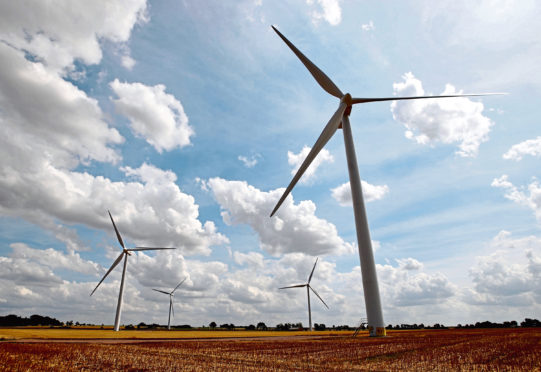More than a quarter of Scotland’s farmers plan to diversify to survive after Brexit according to a new report from NFU Mutual.
Renewable energy is the top diversification choice for producers, accounting for 34% of post-Brexit plans, ahead of property letting on 17% and holiday accommodation on 8.5%.
Asked why they were considering such options, 62% of those surveyed said their main driver was to boost farm income. Other popular reasons included providing a new business opportunity for a partner or other family member (26%), utilising redundant farm buildings or unproductive land (20%) or providing a short-term income (9%).
NFU Mutual Board member and former NFU Scotland president Jim McLaren said: “With declining direct support for many farms on the horizon it’s essential to examine the opportunities available from diversified income streams.”
>> Keep up to date with the latest farming news with The P&J Farming newsletter
NFUS president Andrew McCornick said: “In these uncertain times standing still is not an option; you are holding yourself and the industry back.”
NFU Mutual Farm Insurance manager Chris Walsh said: “Scotland’s farmers are facing their greatest challenge for generations.”
He added: “The basic choices farmers have available to them as direct subsidies cease are to maintain their current business models, specialise, intensify or diversify.
“Every farm is different, and making the right choice depends on many factors, including the farm’s location, land type, family structure, financial and skills set.”
While commenting that farmers in general are “incredibly resourceful”, Mr Walsh warned that for many producers, setting up a non-farming business is a step into the unknown, a challenge the new report was designed to address.
For example, although 89% of already diversified farmers told the survey team that their schemes had a positive effect on the farm business, they also highlighted a number of challenges attached to running an alternative enterprise. These included lack of time (22%); red tape (18%); unreliable broadband (15%) and cash flow (15%).
Lack of access to additional finance and poor broadband coverage were also listed as key barriers for farmers in Scotland who have not, as yet, attempted a diversification project.
Even so, some 27% of this group still see diversification as a viable post-Brexit option










